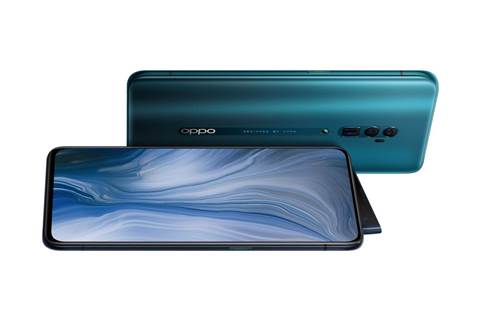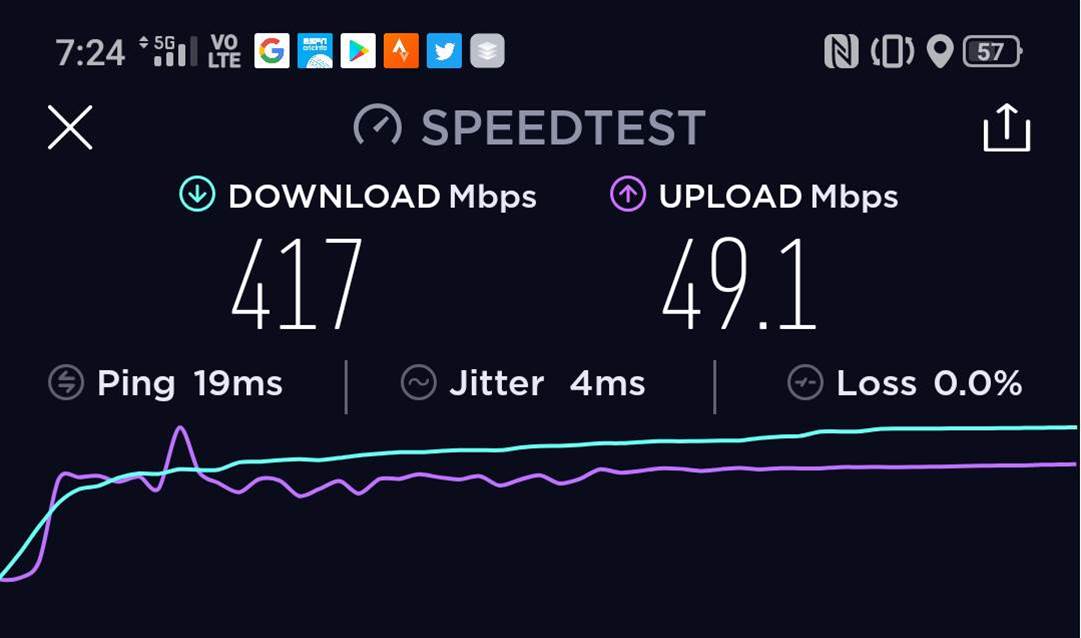We’ve done it. After a bit of trying CRN has used 5G in real life and come away feeling … sorry .. not very impressed.
We tested Telstra’s 5G network on an Oppo Reno 5G smartphone.
The Reno is a fabulous opalescent green and looks like something you’d be thrilled to spot while snorkelling on a coral reef.
As you’d expect from a ~$1500 handset, the screen is bright, battery life is long, the camera captures details brilliantly and everything zips along with scarcely a flutter of noticeable lag.
Telstra’s 5G network in CRN’s Sydney home currently has a modest footprint. But some of it is not far from bits of the city frequented by your correspondent.
So off I went on Monday morning in the hope of slurping some sweet, speedy 5G.
And nothing happened.
I walked right into the niche between the two lobes of coverage to the left of Surry Hills on Telstra’s 5G coverage map depicted below. And never got a whiff of 5G. As I pounded the pavement, totally being that guy who gets in everyone else’s way by looking at a phone instead of my surrounds, all I ever saw was 4G.

And so I walked home disappointed, but with a few kilometres in my legs ahead of the Bloody Long Walk (donations to help beat mitochondrial disease welcome here).
Then I tried again this morning.
And hit paydirt.
Driving in my car, walking on the footpath and sitting on a bench, I was able to make a clear, stable, strong 5G connection. And the Speedtest app produced the following beautiful numbers to document the experience.
Speeds were slower when moving, and when I occupied a trench between two buildings. But that’s to be expected on any network. At worst I had to put up with 60Mbps downloads, which is what I get on my NBN-over-HFC connection at home.
But all that speed didn’t really make the smartphone experience notably better. Downloading a 270MB episode of Bodyguard from Netflix took 30 seconds. Web pages loaded crisply, but it wasn’t clear to me that a 5G connection was the only reason for that speed given the Reno packs an octo-core Qualcomm Snapdragon 855 CPU that can hit 2.84 GHz.
I also tried a couple of sites that I find often struggle to load and play videos (we’re looking at you, cricket.com.au and nrl.com) and they performed rather better than usual, albeit with some of the moderately-heavy pixelation that signals server and client working together to get something happening on-screen in the absence of a strong and steady connection that permits best-quality video.
Overall, the 30 minutes I spent surfing on 5G felt an awful lot like 30 minutes surfing with a strong signal on any new premium-grade mobile device. But also rather less convenient than using any new premium-grade mobile device due to small 5G footprint. That will change over time: Telstra’s promised 5G coverage in June 2019 is more extensive and will become more extensive still over time.
But I can already stream video and audio without interruption to my phone on my daily foot-and-train commute, which involves trips through tunnels, the winding tracks of Sydney’s North Shore Line and a 900m trudge under a flight path that offers an endless parade of heavy passenger planes to mess with radio signals. And the Reno hit 170 Mbps on the 4G network.
How much more do I or anyone else need?
Of course 5G is not really about smartphones. The main game is all sorts of low-latency machine-to-machine communications that reach into nooks and crannies 4G can’t go. But while we wait for that to happen, smartphones are going to be the main play. And based on our experience, and feedback from CRN readers, it's a play that’s not immediately needed or obviously appealing as a must-have replacement for 4G smartphones and networks.






.jpg&h=142&w=230&c=1&s=1)

.png&h=142&w=230&c=1&s=1)





.jpg&w=100&c=1&s=0)










